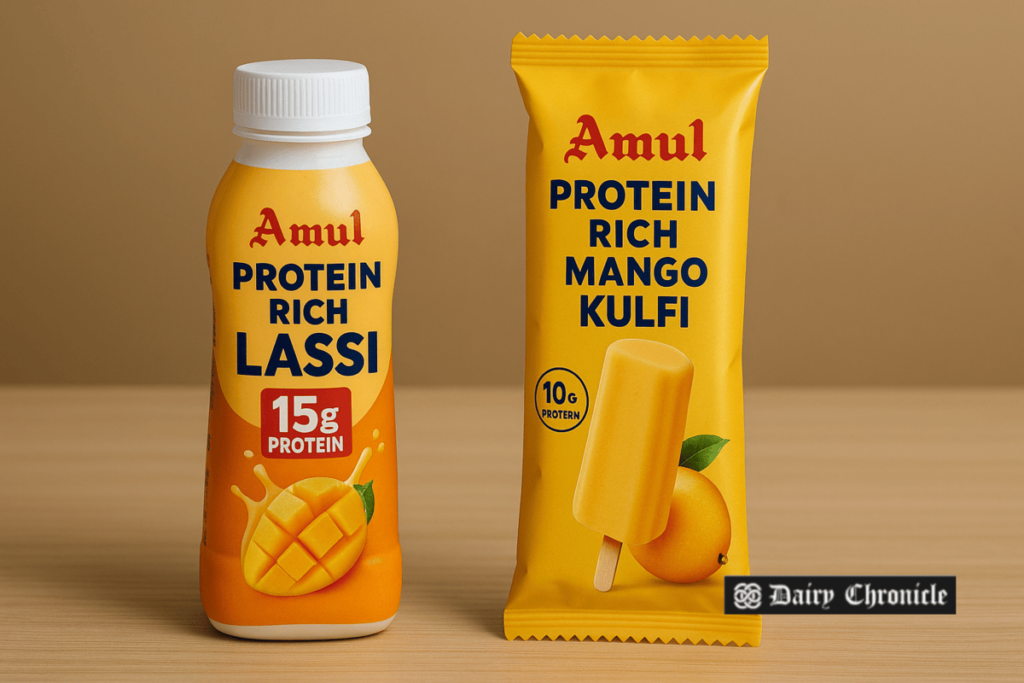Amul expands into protein-enriched foods with affordable products targeting India’s protein deficiency but faces challenges in shifting its dairy-centric brand perception.
Amul, India’s largest dairy cooperative, has taken a bold step into the protein-enriched food segment to address the country’s widespread protein deficiency. According to recent data, nearly 73% of Indians suffer from protein deficiency, with only 9% of the population aware of this nutritional gap. In response, Amul has introduced a range of protein-fortified products aiming to make protein consumption affordable and accessible for the average consumer.
Since 2022, Amul has rolled out innovative offerings like protein lassi and protein kulfi, combining familiar Indian flavors with enhanced nutritional value. In 2025, the cooperative launched a high-protein mango kulfi (providing 10 grams of protein per 60g pack, priced at ₹40) and a protein-rich lassi (offering 15 grams of protein per 200ml at ₹30). Unlike many protein products that target fitness enthusiasts, Amul’s strategy focuses on everyday consumers by integrating protein into traditional and widely accepted Indian foods such as buttermilk, shakes, and paneer.
Amul’s pricing is notably aggressive and competitive. Its whey protein powder is priced at ₹2.67 per gram of protein, significantly lower than competitors like Optimum Nutrition (₹5.08/g) and MuscleBlaze (₹3.43/g). Similarly, Amul’s protein shakes cost ₹2.50 per gram of protein, compared to MuscleBlaze’s ₹3.96/g. This affordability is enabled by Amul’s cooperative model, vast supply chain, and scale, allowing it to offer value-driven pricing without compromising quality.
Brand Perception Hurdles
Despite these advantages, Amul faces considerable challenges in reshaping its long-established dairy-centric brand image to align with the modern, health-focused protein market. Consumer feedback on social media about the taste and texture of protein-enriched products has been mixed. While many appreciate the nutritional benefits and price point, some have expressed reservations about the flavor profiles, indicating a need for continued product development and innovation.
The brand must also work to reposition itself beyond traditional dairy products and communicate effectively about the benefits of its protein offerings. Success in this segment depends not only on pricing and product quality but also on building consumer trust and acceptance in a space that has traditionally been dominated by specialized fitness brands.
Industry Insight
Amul’s foray into protein-enriched foods highlights a significant opportunity for dairy cooperatives to diversify their product portfolios and address critical nutritional deficiencies in emerging markets. By leveraging its cooperative structure and economies of scale, Amul can offer affordable nutrition solutions that have wide-reaching public health benefits.
However, the journey will require strategic brand repositioning, consumer education, and continuous innovation to meet taste expectations and build lasting consumer loyalty in the competitive protein market.



